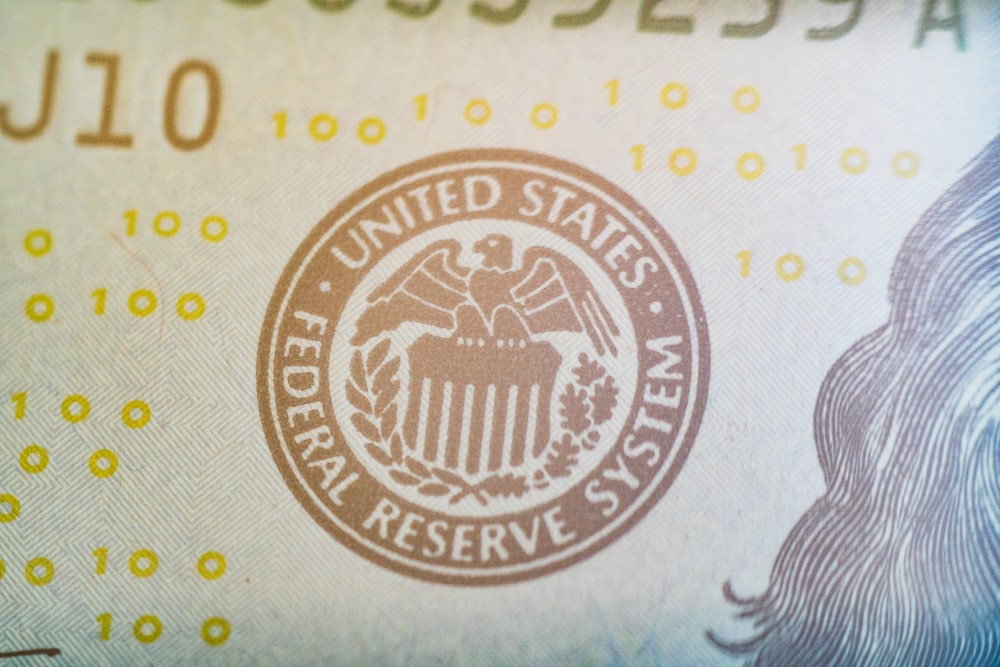We use machine learning to convert the Federal Reserve’s (Fed) text-heavy Beige Book into a sentiment score. The sentiment (-0.31) of the latest Beige Book report (12 Jul) decreased from the sentiment (-0.29) of the last report (31 May).
This article is only available to Macro Hive subscribers. Sign-up to receive world-class macro analysis with a daily curated newsletter, podcast, original content from award-winning researchers, cross market strategy, equity insights, trade ideas, crypto flow frameworks, academic paper summaries, explanation and analysis of market-moving events, community investor chat room, and more.
Summary
We use machine learning to convert the Federal Reserve’s (Fed) text-heavy Beige Book into a sentiment score. The sentiment (-0.31) of the latest Beige Book report (12 Jul) decreased from the sentiment (-0.29) of the last report (31 May). Overall economic expectations for the coming months generally continued to call for slow growth.
Here are the key points from the overall summary of economic activity:
- Five Districts reported slight or modest growth, five noted no change, and two reported slight and modest declines.
- Reports on consumer spending were mixed; growth was generally observed in consumer services, but some retailers noted shifts away from discretionary spending.
- Tourism and travel activity was robust, and hospitality contacts expected a busy summer season.
- Auto sales remained unchanged or exhibited moderate growth.
- Manufacturing activity edged up in half of the districts and declined in the rest.
- Transportation activity was down or flat in most districts that reported on it, as some contacts reported reduced demand due to high inventory levels and others noted continued challenges from labor shortages.
- Banking conditions were mostly subdued, as lending activity continued to soften.
- Despite higher mortgage rates, demand for residential real estate remained steady, although sales were constrained by low inventories.
- Construction for residential and commercial units was slightly lower on balance.
- Agricultural conditions were mixed geographically but softened slightly on balance.
- Energy activity decreased.
Here is a summary of the latest developments from our sentiment index:
- All regional banks, except Minneapolis (+0.41) and Philadelphia (+0.05), have a net-negative sentiment (Chart 2). The national summary is net neutral.
- Richmond (-0.56, previously: -0.09) has seen the largest drop in sentiment compared to the last report.
- Atlanta (-0.06, previously: -0.45) has seen the largest increase in sentiment compared to the last report.
- Kansas City (-0.69, previously: -0.42), Chicago (-0.56, previously: -0.29), and Dallas (-0.56, previously: -0.32) are the three districts with the most negative sentiment.
- Overall, the raw sentiment score decreased for four districts and increased for 9 (including the national summary). The overall aggregated sentiment index was dragged down to -0.31, a touch lower than for the April report (-0.29), mostly due to the outsized decreases in sentiment for Richmond relative to the other districts.
- The touch lower in sentiment corresponds with a drop in the Manufacturing PMI for June but disagrees with the increase in the University of Michigan Consumer Sentiment Index for June (Charts 4 and 5).
What Is the Macro Hive Beige Book Sentiment Score?
In machine learning, one way to navigate a sea of text and audio-based information is with natural language processing (NLP) techniques. The goal of NLP is to understand textual data to contextualise and extract useful information within it. One application of NLP is sentiment analysis. Sentiment analysis aims to classify whether the opinion expressed in a text is positive or negative (or neutral).
We focus on the Beige Book and derive a sentiment score by looking at the proportion of positive and negative words in each report. We calculate a raw sentiment score at a district level. Then we aggregate (equally weighted district-level average followed by smoothing and detrending) these into an overall sentiment index. We can do this in real time as soon as the report is released. Charts 4 and 5 show a comparison of our sentiment score to the US ISM PMI and the University of Michigan Consumer Sentiment Index for the US.
Dalvir Mandara is a Quantitative Researcher at Macro Hive. Dalvir has a BSc Mathematics and Computer Science and an MSc Mathematical Finance both from the University of Birmingham. His areas of interest are in the applications of machine learning, deep learning and alternative data for predictive modelling of financial markets.
(The commentary contained in the above article does not constitute an offer or a solicitation, or a recommendation to implement or liquidate an investment or to carry out any other transaction. It should not be used as a basis for any investment decision or other decision. Any investment decision should be based on appropriate professional advice specific to your needs.)
Enter your email to read this Macro Hive Exclusive
OR
START 30-DAY FREE TRIAL
Already have a Macro Hive Prime account? Log in



